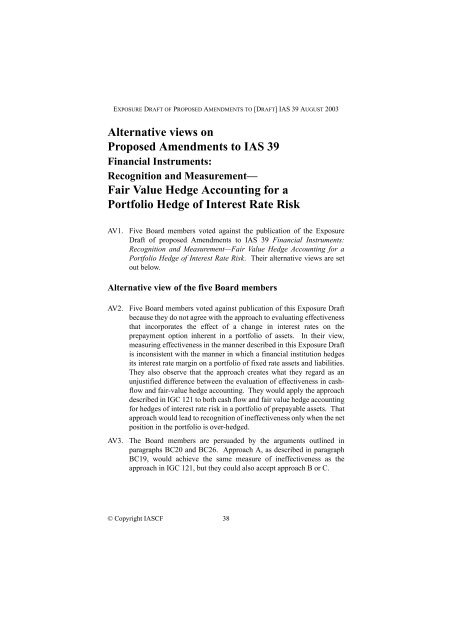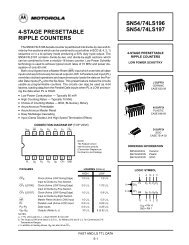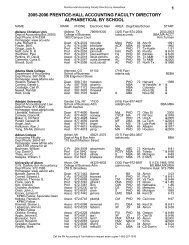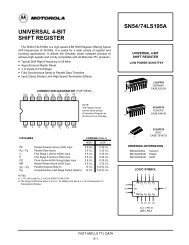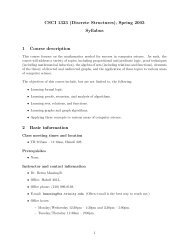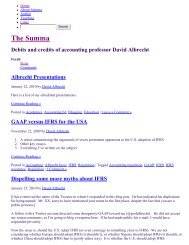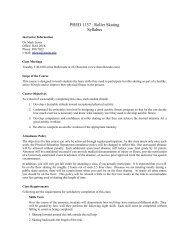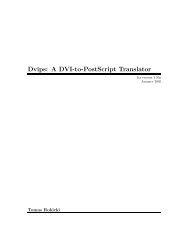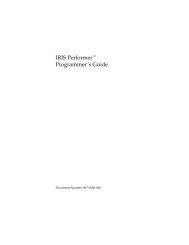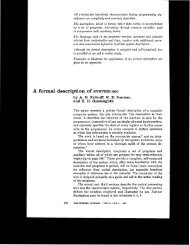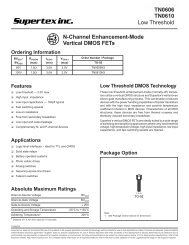fair value hedge accounting for a portfolio hedge of interest rate risk
fair value hedge accounting for a portfolio hedge of interest rate risk
fair value hedge accounting for a portfolio hedge of interest rate risk
Create successful ePaper yourself
Turn your PDF publications into a flip-book with our unique Google optimized e-Paper software.
EXPOSURE DRAFT OF PROPOSED AMENDMENTS TO [DRAFT] IAS 39 AUGUST 2003<br />
Alternative views on<br />
Proposed Amendments to IAS 39<br />
Financial Instruments:<br />
Recognition and Measurement—<br />
Fair Value Hedge Accounting <strong>for</strong> a<br />
Portfolio Hedge <strong>of</strong> Interest Rate Risk<br />
AV1.<br />
Five Board members voted against the publication <strong>of</strong> the Exposure<br />
Draft <strong>of</strong> proposed Amendments to IAS 39 Financial Instruments:<br />
Recognition and Measurement—Fair Value Hedge Accounting <strong>for</strong> a<br />
Portfolio Hedge <strong>of</strong> Interest Rate Risk. Their alternative views are set<br />
out below.<br />
Alternative view <strong>of</strong> the five Board members<br />
AV2.<br />
AV3.<br />
Five Board members voted against publication <strong>of</strong> this Exposure Draft<br />
because they do not agree with the approach to evaluating effectiveness<br />
that incorpo<strong>rate</strong>s the effect <strong>of</strong> a change in <strong>interest</strong> <strong>rate</strong>s on the<br />
prepayment option inherent in a <strong>portfolio</strong> <strong>of</strong> assets. In their view,<br />
measuring effectiveness in the manner described in this Exposure Draft<br />
is inconsistent with the manner in which a financial institution <strong>hedge</strong>s<br />
its <strong>interest</strong> <strong>rate</strong> margin on a <strong>portfolio</strong> <strong>of</strong> fixed <strong>rate</strong> assets and liabilities.<br />
They also observe that the approach creates what they regard as an<br />
unjustified difference between the evaluation <strong>of</strong> effectiveness in cashflow<br />
and <strong>fair</strong>-<strong>value</strong> <strong>hedge</strong> <strong>accounting</strong>. They would apply the approach<br />
described in IGC 121 to both cash flow and <strong>fair</strong> <strong>value</strong> <strong>hedge</strong> <strong>accounting</strong><br />
<strong>for</strong> <strong>hedge</strong>s <strong>of</strong> <strong>interest</strong> <strong>rate</strong> <strong>risk</strong> in a <strong>portfolio</strong> <strong>of</strong> prepayable assets. That<br />
approach would lead to recognition <strong>of</strong> ineffectiveness only when the net<br />
position in the <strong>portfolio</strong> is over-<strong>hedge</strong>d.<br />
The Board members are persuaded by the arguments outlined in<br />
paragraphs BC20 and BC26. Approach A, as described in paragraph<br />
BC19, would achieve the same measure <strong>of</strong> ineffectiveness as the<br />
approach in IGC 121, but they could also accept approach B or C.<br />
© Copyright IASCF 38


